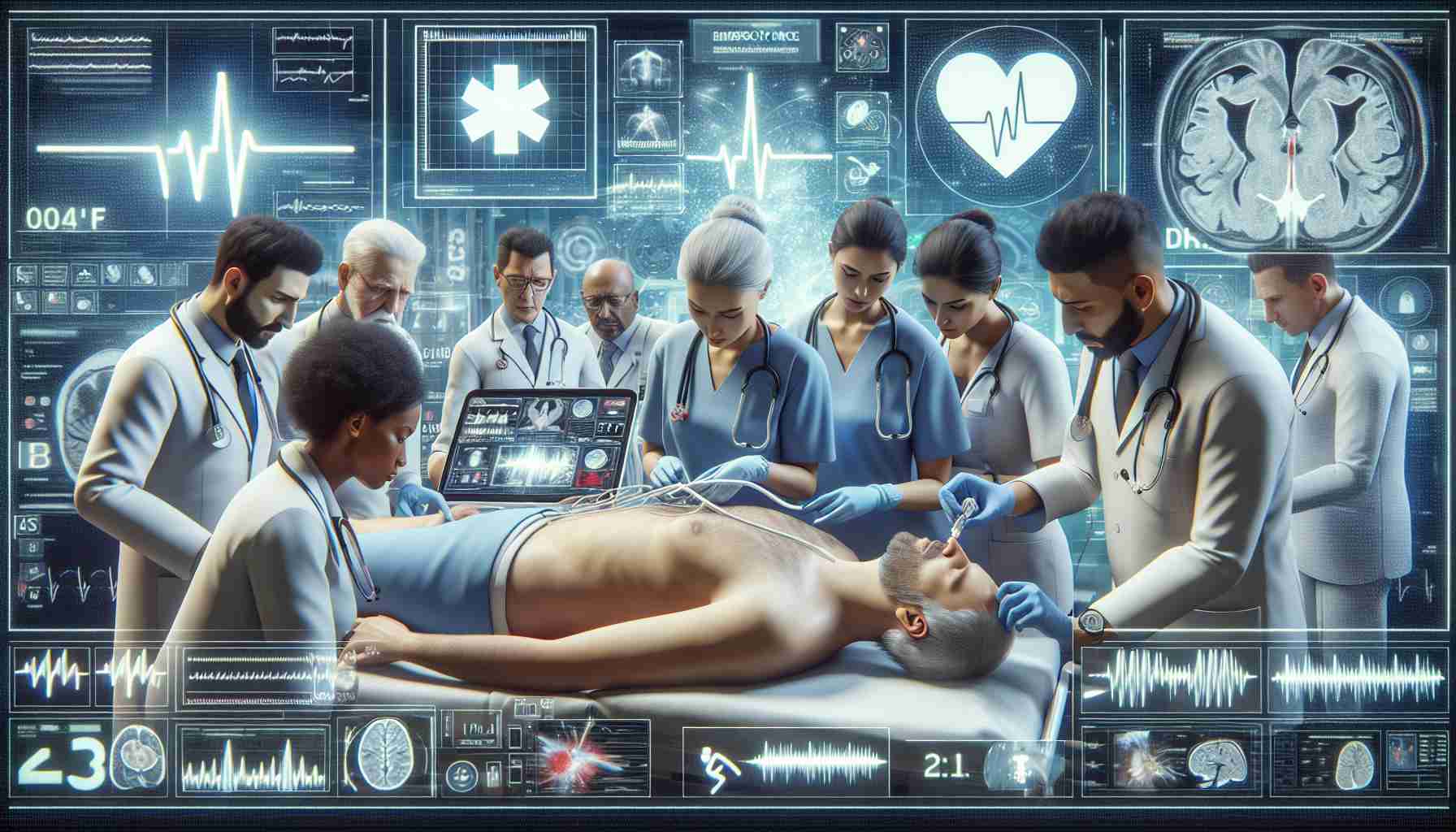Innovative technology revolutionizes stroke detection by analyzing facial cues through a smartphone app, dramatically improving response times and outcomes.
Lead researcher Guilherme Camargo de Oliveira highlighted the importance of facial muscle behavior in identifying stroke patients, emphasizing the significance of asymmetry detection in facial expressions.
The cutting-edge AI-powered tools have shown promising results, with the ability to detect stroke indications through changes in facial symmetry, offering a quick and accurate diagnosis.
A recent study showcased that the new technology successfully detected strokes in a significant percentage of individuals, underscoring its potential to enhance emergency medical services and expedite vital treatment.
Novel Approach to Stroke Diagnosis
While not intended to replace traditional diagnostic procedures, the smartphone application complements existing methods by swiftly identifying potential stroke cases based on specific symptoms correlated with the condition.
Recognizing the critical importance of timely intervention, the researchers aim to collaborate with medical professionals to further refine the technology’s capabilities for diagnosing various brain disorders affecting facial expressions.
By leveraging advancements in AI and image processing, this innovative approach holds promise for saving countless lives by enabling prompt recognition and effective management of stroke cases.
Empowering Health Through Technology
The development of this novel stroke detection method underscores the transformative potential of technology in revolutionizing healthcare practices and enhancing emergency response protocols.
As the research team continues to refine and expand the application’s capabilities, the integration of advanced tools and knowledge stands to revolutionize the landscape of stroke diagnosis and treatment, ushering in a new era of proactive and precise healthcare interventions.
#### Additional Facts:
– Traditional stroke detection methods typically rely on physical examinations and imaging tests like CT scans or MRIs to confirm a diagnosis.
– Early detection and treatment of strokes are crucial to prevent long-term disabilities or even death.
– The World Health Organization (WHO) reports that strokes are the second leading cause of death globally and a leading cause of disability.
– Facial drooping, arm weakness, and speech difficulties are common symptoms of a stroke.
– AI-powered technology is increasingly being utilized in various medical fields to improve diagnostic accuracy and treatment outcomes.
#### Key Questions:
1. **How does the technology differentiate between stroke-related facial asymmetry and natural variations in facial expressions?**
*Answer:* The AI algorithms are trained to recognize subtle but distinct changes in facial symmetry that are indicative of a stroke, differentiating them from normal facial movements.
2. **What challenges might arise in implementing this technology in real-world emergency response settings?**
*Answer:* Challenges may include ensuring widespread adoption by emergency medical personnel, integrating the technology seamlessly into existing medical protocols, and addressing potential privacy concerns related to facial recognition data.
#### Advantages and Disadvantages:
**Advantages:**
– Rapid detection of strokes through facial cues can lead to quicker initiation of life-saving treatment, potentially reducing long-term disabilities and improving patient outcomes.
– The accessibility of the smartphone app allows for widespread deployment and utilization by both healthcare professionals and laypersons in emergency situations.
**Disadvantages:**
– Reliance on technology for diagnosis may lead to over-reliance or incorrect interpretation of results, potentially delaying appropriate medical intervention.
– The need for reliable internet connectivity and smartphone access could pose barriers to the effective use of the app in certain regions or populations with limited resources.
#### Related Links:
– World Health Organization
– National Institutes of Health
